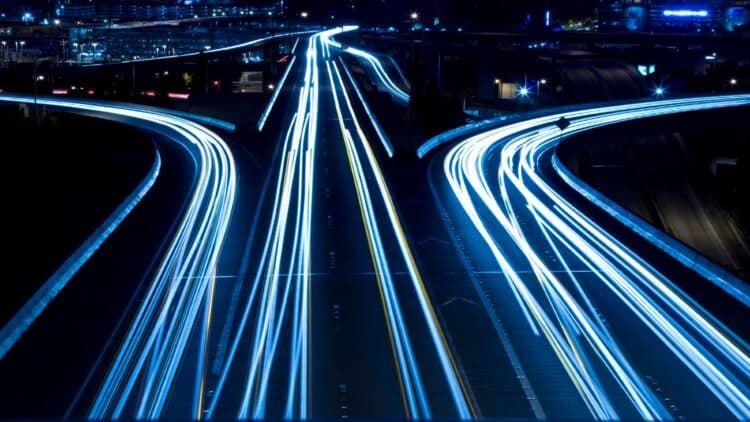These AI-controlled drones may be the future of monitoring traffic and eradicating bottleneck traffic jams once and for all. In the transportation world, AI technology is increasingly playing a bigger role, helping to enforce road traffic safety laws and assist law enforcement in catching drivers who repeatedly break speeding laws and run through red lights. Now, this new AI-controlled drone technology is expected to assist authorities in monitoring the roads and responding quickly to identified incidents.
AI technology makes an impact on the roads
The use of AI technology by law and traffic authorities has, up until now, been mostly focused on the implementation of red-light camera and automated camera technology. While some locations in the country, such as New York City, have been growing their automated camera technology for years, others have only recently begun to pilot the process.
To date, New York City has the largest network of automated camera technology, present in over 2,000 locations across the city. This technology assists the authorities in cracking down on speeding drivers when they are not physically present. These cameras force drivers to slow down, especially in high-risk locations such as school zones, in order to avoid being fined for driving over the speed limit.
More locations around the country are beginning to take a leaf out of New York City’s book, beginning to kickstart the process of setting up these cameras in locations that have been identified as areas where numerous speeding incidents occur. In September, the Traffic Safety Camera Pilot Program in the City of Minneapolis went into effect, whereby five locations in the city have implemented automated speed camera technology with plans to expand the pilot to over forty locations. On your first offence caught by the cameras, drivers will only be issued a warning. Repeated offences caught by these cameras, however, will result in fines up to $80.
AI-controlled drones to monitor the traffic
Expanding the use of AI technology by traffic authorities, company Elistair has recently showcased its AI-controlled drones, which can be employed to help traffic authorities monitor the roads and identify accidents and other incidents on the road. This surveillance technique can help reduce traffic jams caused by incidents on the road by ensuring that authorities can identify an incident faster and respond accordingly.
“With cameras and sensors, UAVs capture extensive data on traffic flow and can cover large areas quickly and efficiently. From city streets to highways, UAVs are transforming traffic monitoring and management. These UAVs also play a critical role in crowd management operations by observing crowd movement patterns and density of traffic,” describes Elistait on its website.
Additionally, the AI-controlled drones can provide insight for authorities into traffic and pedestrian movement patterns, informing future city-planning efforts to ensure that the roads can accommodate road users efficiently.
Creating a safer space for all road users
Ultimately, these improvements in technology for road traffic authorities are intended to make the roads a safer place for all road users. Keeping the roads safe is not only about implementing harsher convictions, but also responding to the current driving patterns of road users and expanding infrastructure to accommodate the needs of a particular location.
However, states have continued to implement harsher driving convictions for road users who repeatedly break the law. This is to ensure that a zero-tolerance approach is displayed towards drivers who continue to break the laws of the road, highlighting a lack of respect towards the safety of their fellow road users. While increased convictions are not always the best way to reduce unlawful driving practices, they do make drivers think twice about breaking the law if the associated conviction is not merely a fine but also jail time or a felony charge.


